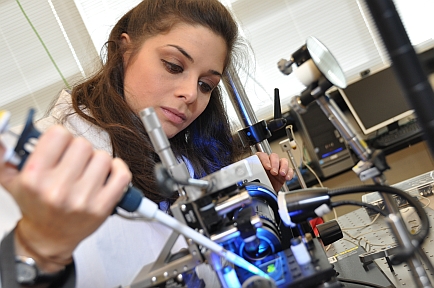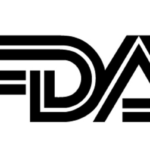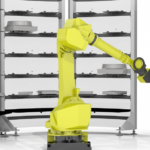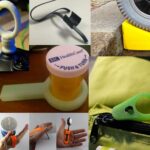

There are few things more important in this world than water, and access to it – particularly clean, safe water. Unfortunately, there are few things that are harder to come by in many parts of the world. There are many different methods of purifying water, but they almost all have some sort of drawback – cost, unreliability, etc. It’s also difficult to determine just how clean, and how safe, a water supply is.
“Current water safety practice involves only periodic hand testing, which limits sampling frequency and leads to a higher probably of disease outbreak,” said Professor Mina Hoorfar, Director of the School of Engineering at the University of British Columbia Okanagan. “Traditional water quality sensors have been too expensive and unreliable to use across an entire water system.”
3D printing has opened up new doors into water purification technology; just last week, we looked at an in-development device, currently being prototyped using 3D printing, that uses heat from the sun to sterilize water. As Dr. Hoorfar and her lab are showing, 3D printing is also proving itself to be useful in the development of devices that can assess water quality, as well. In Hoorfar’s Advanced Thermo-Fluidic Laboratory, researchers are using 3D printing to create tiny wireless sensors that can operate continuously and be used anywhere in the water system.
In a new paper entitled “3D Printing-Based Integrated Water Quality Sensing System,” which you can access here, the researchers explain that current miniaturized water quality monitoring sensors are tested in the laboratory under ambient pressure and steady-state flow conditions, which is fine until they’re deployed in actual water distribution systems, where pressure and flow rate can fluctuate dramatically. So they developed a new kind of sensor, one whose accuracy is not affected by pressure or temperature.
The 3D printed devices contain tiny, embedded pH and conductivity sensors, which were tested at different temepratures and flow rates. The results of the testing showed that flow rate and temperature do not affect pH at all, while they only affect conductivity readings under extreme conditions. The sensors are designed to be distributed throughout water systems, where they gather and wirelessly transmit data back to testing stations. One benefit is that they work independently, meaning that if one fails the others continue to function.

“This highly portable sensor system is capable of constantly measuring several water quality parameters such as turbidity, pH, conductivity, temperature, and residual chlorine, and sending the data to a central system wirelessly,” Dr. Hoorfar said. “It is a unique and effective technology that can revolutionize the water industry.”
Because the devices are 3D printed, they’re quick and inexpensive to fabricate, and they’re also designed to be sturdier than other sensors currently in use. Most current sensors are unable to withstand the level of pressure at which water is supplied to customers, but these new sensors can hold up just fine, meaning that they can be placed right within a home, offering a more immediate level of protection against contamination.
This is great news on a global level, because, as Dr. Hoorfar points out, water contamination has the potential to affect people anywhere, not just in poor or developing countries. Over a decade ago, E.coli in Walkerton, Ontario’s water system killed four people and sickened hundreds, and just last year a state of emergency was declared in Flint, Michigan due to high levels of lead in the city’s water supply. These situations offer a tragic reminder that even the most technologically advanced countries can still fall short when it comes to critical technology like water testing and treatment.
“Although the majority of water-related diseases occur in lower- or middle-income countries, water quality events in Walkerton, for example, raise serious questions about consistent water safety in even developed countries like Canada,” says Dr. Hoorfar. “Many of these tragedies could be prevented with frequent monitoring and early detection of pathogens causing the outbreak.”
Authors of the paper include Muinul Banna, Kaustav Bera, Ryan Sochol, Liwei Lin, Homayoun Najjaran, Rehan Sadiq and Mina Hoorfar. Discuss in the Water Quality forum at 3DPB.com.
[Source: Phys.org / Images: UBC Okanagan]
If you're looking for affordable 3D visualization services in the USA, our platform provides an ideal solution for all your architectural and real estate needs. Through our service, you can access high-quality 3D renderings at competitive prices without compromising on quality. Whether you need interior visualizations, exterior renderings, or architectural animations, our team ensures that you get professional results that fit within your budget. With our support, you can make your projects visually stunning while saving on costs, all with a quick and straightforward process.
Through our site, you can easily order affordable 3D visualizations for your projects, whether for a residential property, commercial development, or architectural design. We understand the importance of staying within budget, and that's why we offer tailored solutions to ensure you get the best value for your investment. Our experts work efficiently to provide you with realistic, photorealistic 3D images that will elevate your presentations and attract clients, making your property stand out in the market.






